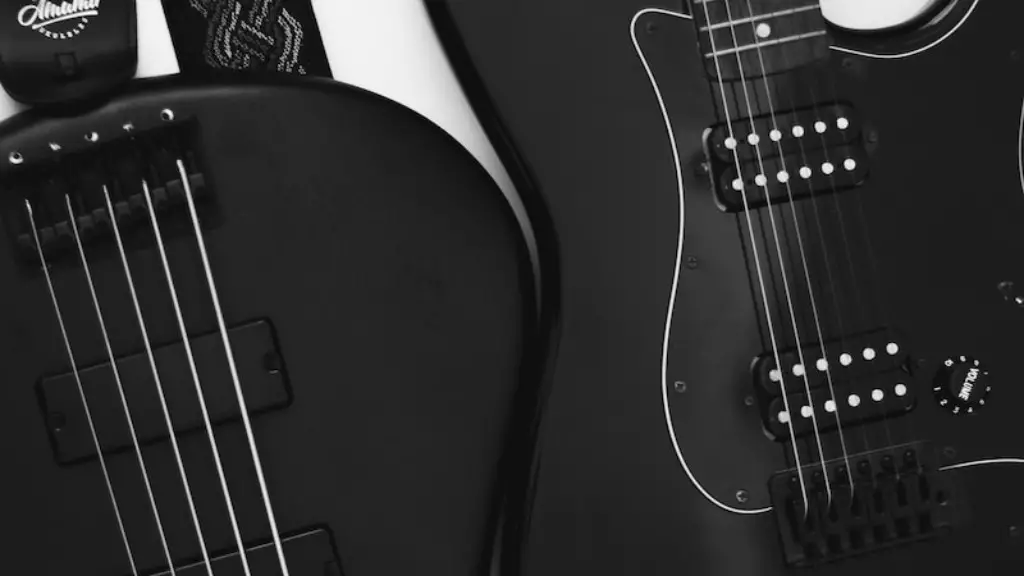Tone on electric guitar is the combination of sound that a guitarist creates when playing their instrument. It is the result of a mix of many different factors, including the type of guitar they are playing, the type and quality of pickups that are installed on it, the amplifier they are using, and how the guitarist plays their instrument.
The tone created by an electric guitar player can range from bright and clear to dark and heavy. It can be mellow or aggressive depending on how they play. The tone created is unique to each player – no two will sound exactly alike even if they are playing the same song.
The ability to get a good tone on an electric guitar is one of the most important skills for any guitarist to possess. By understanding how all these elements interact with each other and finding the right balance between them, players can create their own signature sound.
Tone on Electric Guitar
Tone on an electric guitar is the combination of sound created by the instrument’s pickups, amplifiers, and effects pedals. It is the sound that comes out of your amp when you bring your electric guitar to life. Tone shaping is the process of altering the tone of an electric guitar with different effects and pedals. Effects such as distortion, delay, chorus, and reverb can be used to create a unique sound for guitarists.
Effects pedals are used to create a range of sounds from subtle to extreme. They can add warmth or distortion, create ambient sounds and add layers of sustain. They can also be used to add extra flavor to the sound or help give it more definition. Tone shaping is important in creating a unique and personal sound that stands out from other guitarists. Achieving great tone on electric guitars requires experimentation with different effects pedals and techniques. With proper use, these tools can help any guitarist craft their own signature sound.
Pickups and Tonal Characteristics
The tone of an electric guitar is determined by several factors, including the type of pickups used, the type of strings, and their tuning. Pickups are the components that “pick up” the vibrations from the strings and convert them into electrical signals. Single-coil pickups have a brighter, more aggressive sound and humbucker pickups have a fuller, warmer sound. Different types of woods used in the body of the guitar can also affect its overall tone. Alder and maple are popular choices for electric guitars because they provide a balanced sound with good sustain. The type of strings also affects tone; lighter gauge strings will produce a brighter sound than heavier gauge strings. Lastly, proper tuning is key to achieving great tone on an electric guitar.
The combination of all these elements will create a unique tonal characteristic for each individual guitar. A combination of high output pickups with lighter gauge strings and lower tuning can result in a gritty, powerful tone while low output pickups with heavier gauge strings and higher tuning can provide a mellower, more bluesy sound. Experimenting with different combinations is key to finding your ideal tonal characteristics on your electric guitar.
Amplifiers and their Role in Tonal Quality
The electric guitar tone is a combination of the pickups, strings, amplifier, and effects. The amplifier is perhaps the single most important factor in producing the desired tonal quality. Amplifiers can come in various forms such as tube, solid state, digital, or hybrid. Each type has its own unique characteristics that can greatly influence the sound of the electric guitar.
Tube amplifiers have been around since the dawn of electric guitars and are known for their warm tone and natural compression. Solid state amps offer a more consistent sound with less noise than tubes but lack their warmth and character. Digital amps offer a wide range of tones but may lack the organic feel of analog amplifiers. Hybrid amps combine elements from all three types to provide a versatile range of sounds.
No matter which type you choose, your amplifier will be the main factor determining your tone. An amp’s power rating, preamp gain level, speaker size, cabinet design and speaker configuration can all have an effect on your sound. Experimenting with different amp settings will help you find the right tone for your individual playing style.
Different Wood Materials Used in Guitars and their Impact on Tone
The type of wood used in the construction of a guitar plays an important role in determining its overall sound or “tone”. Different woods have different densities, resonant frequencies and acoustic properties, which all contribute to the instrument’s unique sound. The most common woods used in guitar construction are Alder, Maple, Mahogany and Rosewood.
Alder is a light-colored wood that provides a full-bodied tone with good clarity and articulation. Maple is denser than Alder and provides more bright tones that are great for cutting through a mix. Mahogany has warm mid-range tones and is often found on electric guitars with humbuckers because it can handle higher outputs without sounding muddy. Rosewood has more of a mid-range focus and adds extra warmth to the overall sound.
The type of wood used in a guitar can greatly influence its tone, so it’s important to consider when choosing an instrument. Different types of wood can also affect the feel of the neck as well as the aesthetic look of the guitar. Ultimately, it comes down to personal preference but understanding how each type of wood affects tone can help you make an informed decision.
Adjusting the Setup to Maximize Tonal Clarity
Tone on electric guitar is one of the most important aspects for guitarists. It is determined by a combination of factors, including the type of guitar, strings, pickups and amplifier used. To achieve the best tone possible, it’s important to carefully adjust the setup of your electric guitar. This includes setting the action and intonation, adjusting string height and pickup height, and changing out worn parts.
Another way to improve tonal clarity is to regularly clean your fretboard and strings with a cloth or cleaner specifically designed for guitars. This will help remove dirt and grime which can affect tone. Additionally, using fresh strings on a regular basis can also help maximize tonal clarity as they provide a brighter sound than older strings. Finally, experimenting with different types of pickups can also help you achieve a unique tone. With some patience and experimentation, you can create great tones with your electric guitar setup.
The Role of Strings in Shaping Tone
The strings on an electric guitar are one of the most important factors when it comes to shaping tone. Strings are made with different core materials and windings, which all produce different sounds. The gauge, or thickness, of the string can also have an effect on the tone. Thicker strings have a fuller sound, while thinner strings have a brighter sound. Additionally, the type of tuning and tension used on the strings can play a role in how they affect tone. Higher tension produces brighter tones while lower tension produces fuller tones.
Strings also play an important part in sustain – the length of time a note rings out after it is played. Heavier gauge strings usually provide more sustain than lighter gauge ones, but there are other factors that can affect this as well. The quality of the guitar and its pickups will also affect sustain. Each type of string provides its own unique characteristics that shape the overall tone. With proper experimentation and knowledge of how each factor affects sound, electric guitarists can create their own signature tones that make their playing stand out from the rest.
Final Words
The tone on an electric guitar is the sound that comes out of the amplifier when electric current is passed through it. It is determined by the type of guitar and amplifier used, as well as the settings used on them. The tone of a guitar can be changed by adjusting the volume, gain, treble and bass controls or even by altering the pickups. No matter what your playing style or genre is, electric guitars provide endless opportunities for you to create your desired sound. In conclusion, tone on an electric guitar can be adjusted and altered to create a unique playing experience for each musician.




